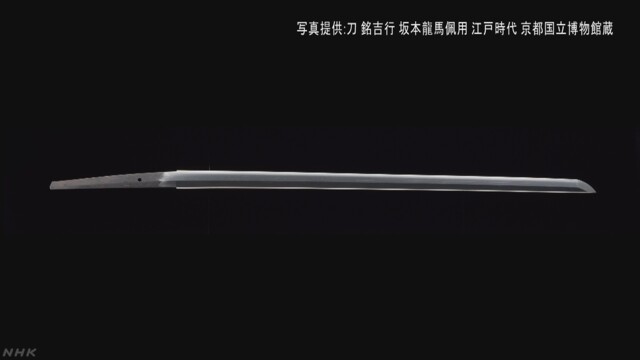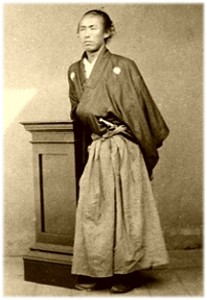
No More “faith in truth”: A Sad Day In American History



“California governor Brown endorses Clinton.” This headline today from CNN is a sore disappointment from an otherwise admirable politician.
I grew up in a suburb of Los Angeles in the 1960s and 70s. One of the dads on our block was Bob Moretti, speaker of the California State Assembly, the second most powerful politician in the state. Mr. Moretti, as we called him, was a great athlete (I think he said he had played football for Notre Dame). He loved to play in pick-up baseball, football and basketball games with us kids on the block. As such, he was our good friend. In 1974 he ran in the Democratic primary for governor, when he was defeated by Jerry Brown. On the night of the election, I remember seeing Moretti and Brown speaking to each other alone, seated on the curb in front of Moretti’s house, a scene that is etched in my mind forever. Bob Moretti passed away in 1984.
Jerry Brown of course became governor of California. And he admirably refused to live in the governor’s mansion. “When he became governor the first time, in the 1970s, Brown lived in a small apartment near the Capitol, sleeping on a mattress on the floor. When he wasn’t walking to work, he rode in a blue Plymouth rather than the standard limousine.” (Los Angeles Times, Oct. 16, 2015)
Fast–forward around 25 or 30 years when I saw former Governor Brown, then mayor of Oakland, California, at a reception held at the residence of the Japanese consul general in San Francisco, a mansion in the exclusive Pacific Heights neighborhood. I couldn’t resist walking up and introducing myself to the mayor, because I thought we had some common ground: I mentioned that I had seen him and Moretti sitting on the curb down the block from my house all those years ago. But more importantly, I had always admired him for his down-to-earth ways.

Yesterday I attended Bernie Sanders’ rally in Oakland. One of the highlights of his speech for me was his mention of the price of his suit, about $99, he said. Bernie has famously rejected super packs. Nor does he hold fund-raisers that cost thousands of dollars to attend. Not so Clinton, as is well publicized. On the same day that Gov. Brown announced his endorsement of Clinton, the Boston Herald reported, “Hillary Clinton will tap big-name celebrities to finance a critical last push to knock progressive stalwart Bernie Sanders out of the Democratic primary, including an appearance tonight with rock star Jon Bon Jovi at a Seaport fundraiser.” At the Sanders rally in Oakland yesterday, I saw a young woman holding up a signboard: “Unf*uck the country: Feel the BERN.”
Governor Brown, how could you endorse Clinton over Sanders?

It is generally thought that this sword, forged by the sword smith “Yoshiyuki,” was the one that Sakamoto Ryoma had with him when he was assassinated in Kyoto on the evening of his thirty-third birthday. Even so, it has long been a point of controversy whether or not this was actually the same sword. It is housed at the Kyoto National Museum. When I first visited the museum years ago, while researching my novel Ryoma Life of a Renaissance Samurai, I was allowed to take it in my hands. At any rate, I was thrilled!
According to a May 10, 2016 article from NHK News, the Museum more or less confirms that this was indeed Ryoma’s sword.


Sakamoto Ryoma, founder of Japan’s first trading company, was a swaggering swordsman who packed a Smith & Wesson, an outlaw, and leader in the “samurai revolution” at the dawn of modern Japan. And now, in the 21st century, he’s a superstar.
Ryoma’s 180th birthday is being celebrated this year through a series of events at his hometown of Kochi, including the annual gathering of “Ryoma fans” from around the country to be held November 14 and 15.
Ryoma’s grave is in the old cemetery at Ryozen Gokoku Shrine, in the hills of Higashiyama on the east side of Kyoto, where he was assassinated on his 32nd birthday in 1867. The narrow, well-trodden pathway leading up to the grave is always lined with tiles inscribed with handwritten messages to Ryoma; and his grave is adorned with fresh flowers, incense, cups of sake, sweets and more handwritten notes. Each time I have visited the gravesite I’ve been struck with awe at the testimony of reverence and adoration—even love—by people of all ages come from all parts of Japan to pay their respects.
With the geopolitical and economic challenges facing Japan today, many people express their wish that a leader of Ryoma’s caliber would emerge. “Who from the past millennium of world history would be most useful in overcoming Japan’s current financial crisis?” a national newspaper once asked executives of 200 Japanese corporations. Ryoma received more mention than any other historical figure, topping such giants as Thomas Edison, Leonardo da Vinci, Saigo Takamori, Oda Nobunaga and the founders of NEC and Honda.
So why does Ryoma command such respect and adoration? I think the answer lies, in part, in his charismatic personality, his love of freedom, and the ways he lived and died. Read about his life in my Ryoma: Life of a Renaissance Samurai, the only biographical novel about him in English.
For updates about new content, connect with me on Facebook.

Ryoma: Life of a Renaissance Samurai, the only biographical novel about Sakamoto Ryoma in English, is available on Amazon.com.
Sakamoto Ryoma’s level of expertise with a sword has long been a topic of debate among historians, writers and so-called “Ryoma fans” throughout Japan. That he was an accomplished swordsman has never been questioned. He practiced the Hokushin-Itto style of kenjutsu at Chiba Sadakichi’s school in Edo for several years, receiving the respectable rank of mokuroku. But he famously used a pistol to defend himself during an attack by Tokugawa police at the Teradaya inn in Fushimi in early 1866. And less than two years later, he was assassinated at his hideout in Kyoto. If he was an expert swordsman, some ask, why did he use his pistol instead of his sword at the Teradaya? And why wasn’t he able to defend himself at Kyoto?

The mokuroku is the only extant certificate that Ryoma received from Chiba. But notably it was for the halberd (naginata) and not the sword. Nor was it for the rank of kaiden, awarded to a swordsman who had mastered the style. And so, some argue, Ryoma wasn’t such a skilled swordsman after all. But as reported by Yomiuri Shinbun on October 14, 2015, a recently revealed handwritten list of certificates in the Hokushin-Itto style that Ryoma had supposedly received includes certificates of heiho kaiden (“expert in the art of warfare”) for the halberd and the sword, along with a mokuroku for the sword. The scrolled certificates were reportedly kept at the Hokkaido home of a Sakamoto family descendent, which was destroyed in a fire in the early part of the 20th century.
Meiji Restoration historian Mamoru Matsuoka takes a cautious view of the above. While the list includes the mokuroku certificate for the sword, it does not include certificates for the subsequent ranks he would have received before kaiden. And so, Mr. Matsuoka suggests on Facebook, the “kaiden” in the list must have been a mistake for “mokuroku.”
For updates about new content, connect with me on Facebook.